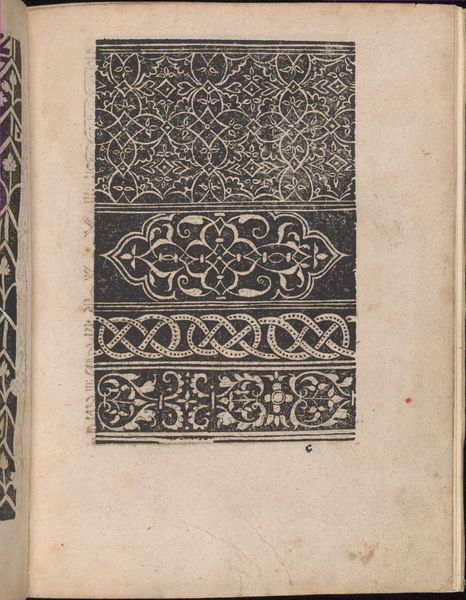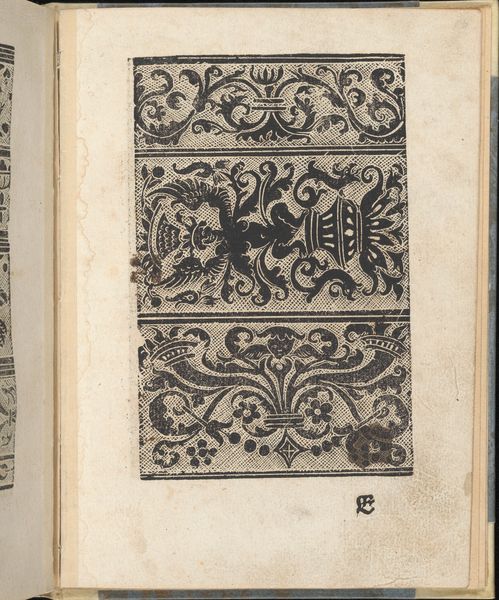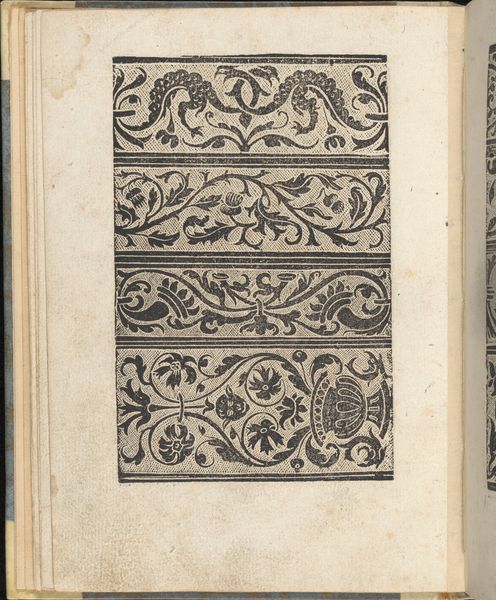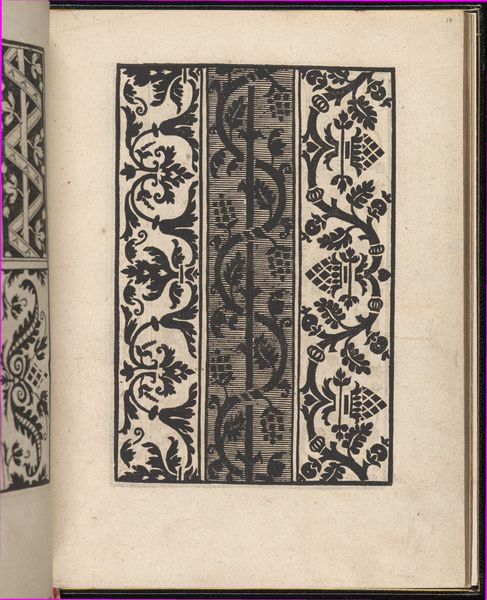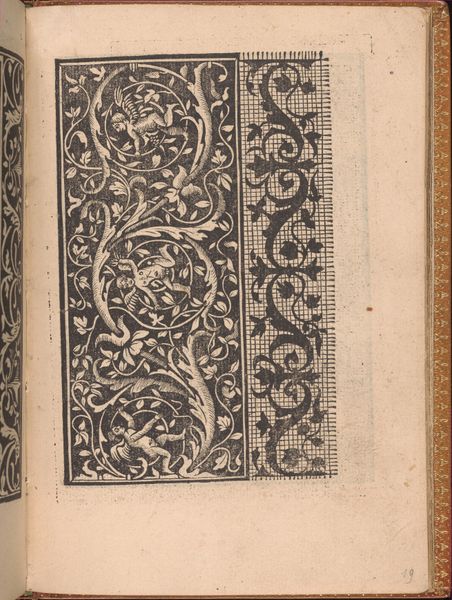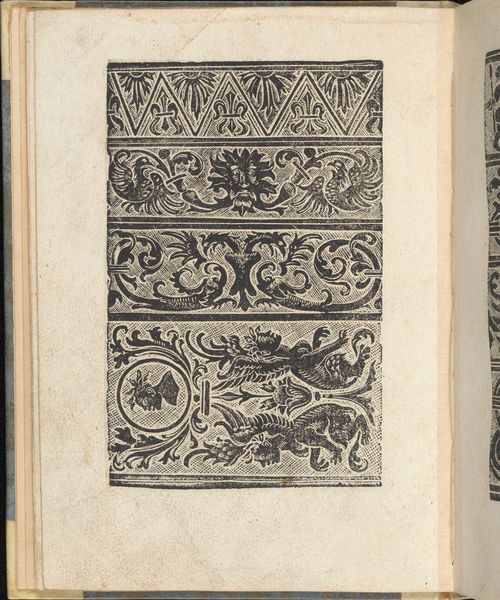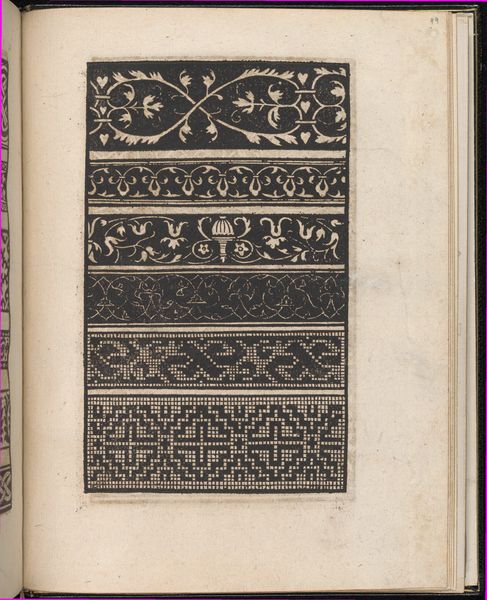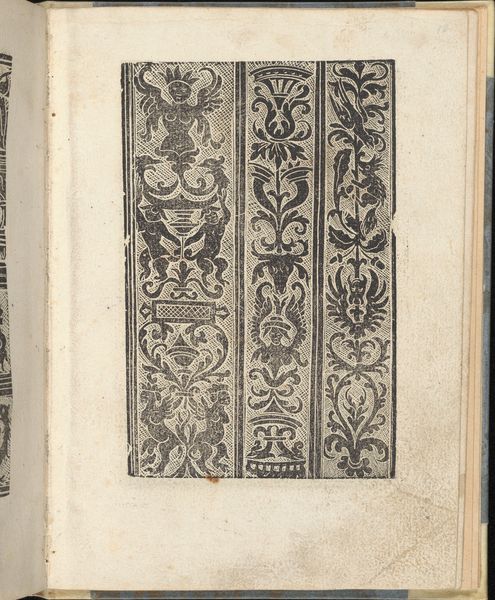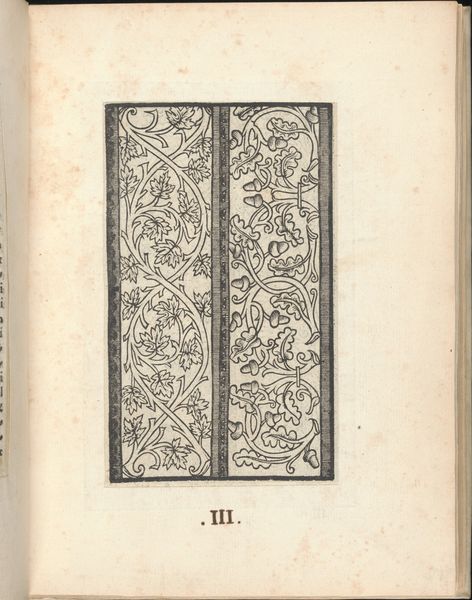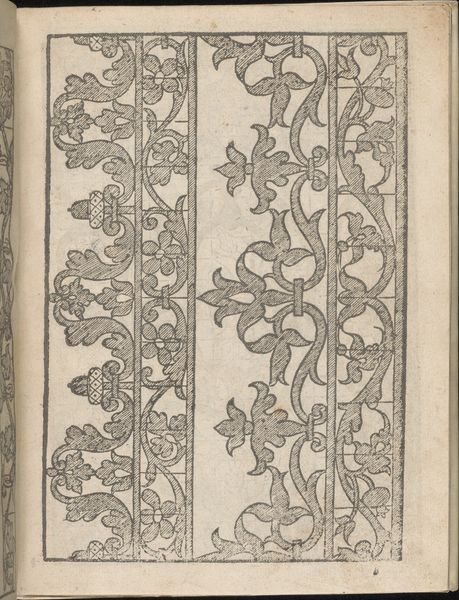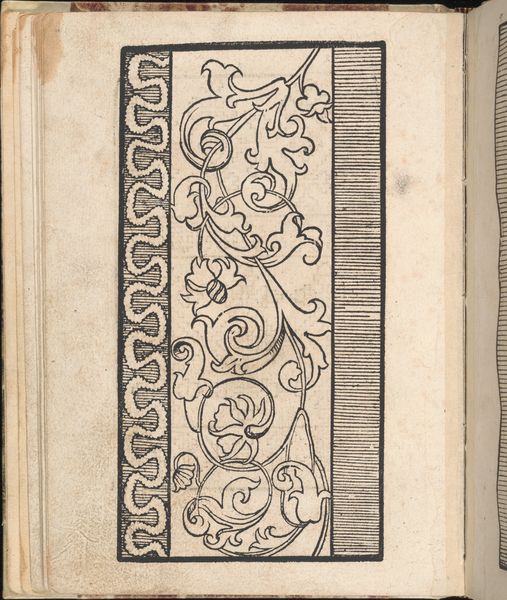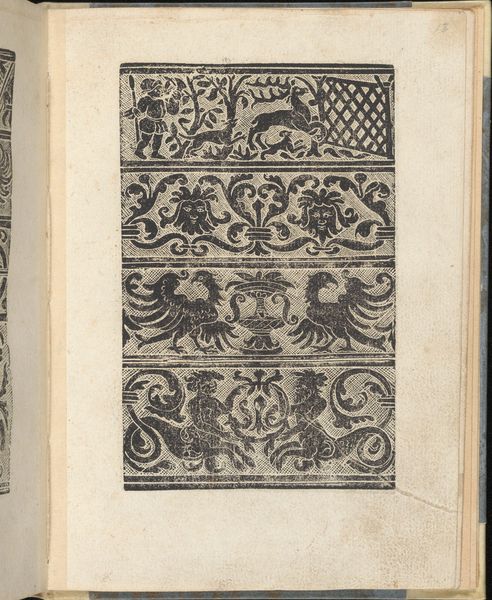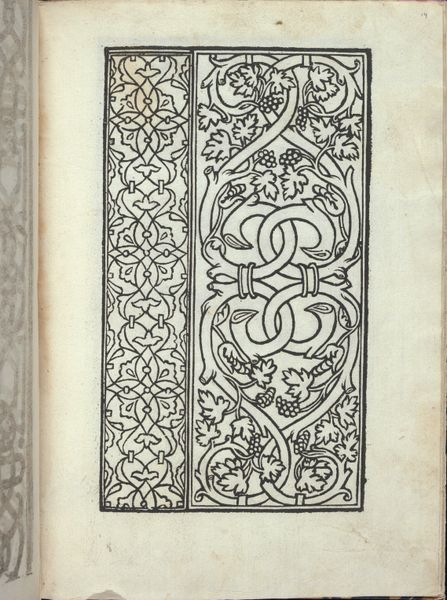
Libro quarto. De rechami per elquale se impara in diuersi modi lordine e il modo de recamare...Opera noua, page 15 (recto) 1532
0:00
0:00
drawing, graphic-art, print, woodcut
#
drawing
#
graphic-art
#
ink paper printed
# print
#
book
#
11_renaissance
#
tile art
#
coloured pencil
#
woodcut
#
pen work
Dimensions: Overall: 8 3/8 x 5 7/8 x 3/16 in. (21.2 x 14.9 x 0.5 cm)
Copyright: Public Domain
This is a page from ‘Libro quarto,’ a book of embroidery patterns printed in Venice in the early 16th century by Alessandro Paganino. It’s a woodcut, meaning the design was carved in relief on a block of wood, inked, and then printed onto paper. The patterns here aren't abstract; they show organic forms such as vines and leaves, presented as a band and within a border. The process of woodcutting lends itself to bold outlines and a graphic quality. The original would have been a mirror image. This printmaking method allowed for the widespread dissemination of designs. Consider how this book democratized access to sophisticated patterns. Embroidery was a skilled occupation, but pattern books like this one allowed more people to participate, influencing fashion and domestic aesthetics. It’s a beautiful example of how the industrial process of printing could make craft skills more accessible, blurring the lines between high art, craft, and commerce.
Comments
No comments
Be the first to comment and join the conversation on the ultimate creative platform.
